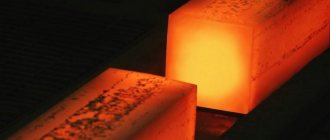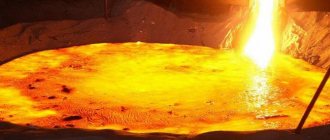Share in the economy in simple words
The share in the economy is calculated to determine the influence of one part of the instrument on the entire item. In simple terms, an enterprise uses an indicator to determine how a particular fragment affects the overall condition. For example, if the total cost per unit is determined, then all expenses are classified and then it is determined what the company spends the most money on.
Take our proprietary course on choosing stocks on the stock market → training course
The share is also calculated when analyzing the overall financial and economic activities of the enterprise. In this case, the company's expenses and income are taken into account. Often, a balance sheet is used to identify the value of an indicator. Specific gravity is usually measured only as a percentage. Moreover, the whole item will always be equal to 100%.
| Business valuation | Financial analysis according to IFRS | Financial analysis according to RAS |
| Calculation of NPV, IRR in Excel | Valuation of stocks and bonds |
Accounting for fixed assets of an enterprise
Fixed assets are controlled both in kind and in value form.
Control in kind
carried out through inventory. The results of these activities are necessary to establish the number of equipment, determine the amount of production capacity, and obtain data on the productivity of fixed assets.
Valuation of funds
is needed for their correct accounting, as well as regular analysis of the condition, dynamics, and rationality of operation of the funds. Also, the monetary value of such property is used in determining depreciation, studying the profitability of the organization and calculating the cost of the manufactured product.
What does specific gravity show?
As already mentioned, specific gravity shows the influence of one part on the whole object. For example, if an indicator of production costs is calculated, it can be used to understand where the company spent more money during the production of goods.
The indicator is also used to identify output per employee, per team and per workshop. To do this, the quantity of products produced by a calculation unit (an employee, a group of specialists or a department) is divided by the total number of goods manufactured and multiplied by 100. In this case, the specific gravity reflects the quality of the work of the employee, team or workshop.
Specific gravity helps determine:
- quality of distribution of food supplies;
- efficiency of the enterprise;
- feasibility of spending funds;
- main sources of income and expenses, etc.
To identify the dynamics of the share in the economic development of an enterprise, it is calculated for each indicator by year. In this way, you can understand how the structure of the company's assets and liabilities has changed.
Depreciation of fixed assets of an enterprise
When talking about depreciation, we cannot help but mention wear and tear. This concept refers to the deterioration of the original qualities of an object. He can be:
- physical
, when the properties gradually deteriorate over time (due to the characteristics of the material of manufacture) or due to active use and the action of environmental factors; - moral
, which manifests itself due to the active development of technology, when either cheaper analogues or products similar in purpose with improved characteristics appear on the market.
Depreciation is the cost expression of wear and tear.
“Depreciation is when the cost of assets is transferred in parts to the price of manufactured goods. The full transfer of value is carried out during the time that is recognized as the useful life of the object.”
Founder of the school of accountants and auditors “BEST” Alekseeva N.
The organization selects one of the depreciation methods for fixed assets and fixes it in the Accounting Policy.
1. Linear method. The simplest option, in which the transfer is carried out in equal “portions” based on the monetary value of the fixed assets and the depreciation rate (depending on the service life of the object).
Example. The company bought a fixed asset, paying 150,000 rubles for it. The product passport indicates a five-year service life. The inventory rate is 20%. The annual amount of deductions is calculated as follows: 150,000*20% = 30,000 rubles.
2. Declining balance method
– when the annual amount of deductions is determined by the residual value and depreciation rate. It turns out that the deduction is maximum in the first year of the fund’s service and gradually decreases over time.
3. Method of depreciation based on the sum of the numbers of years.
Here, annual deductions are calculated as the ratio of the number of years “not yet served” by the object to the total sum of the number of years of useful operation.
4. Depreciation is proportional to the volume of goods produced.
Here, royalties are calculated per unit of products released.
Example. The organization purchased the machine by paying 100,000 rubles. It is planned to produce 4,000 units of production. During the year, only 700 pieces of such products were created. Accordingly, the amount of annual depreciation will be equal to: (100,000/4,000)*700 = 17,500 rubles.
Subject of specific weight in economics
The subject of specific weight in economics is any indicator that can be identified as a part of the whole. The subject is:
- Income. The company receives income from various types of activities. To understand which direction brings more profit, the share is calculated.
- Expenses. The enterprise spends funds not only on production, but also on other needs. The indicator is identified in order to determine the level of costs for a particular area of activity and the efficiency of spending money for each item.
- Assets. These include financial instruments through which the company makes a profit. As a rule, calculating the share of assets is necessary to determine the adequacy of the enterprise’s equipment and to track dynamics.
- Obligations. These include the company's monetary debts, including to suppliers and buyers, customers and creditors. The share of obligations is calculated to identify the significance of each of them and the degree of their influence on the costs of the enterprise.
- Production . To determine the profitability of the work of an employee, workshop and department, the specific gravity is calculated.
Important! The share can be identified for almost every economic indicator of a company’s activities.
Valuation of fixed assets of an enterprise: methods
An organization can use one of three methods for valuing fixed assets:
- At original cost
- when the costs of purchasing property (delivery, assembly) are taken into account in prices at the time of drawing up the transfer documents. - At replacement cost
- the amount of costs necessary to reproduce funds in the current conditions, that is, for the period of revaluation (in current year prices). - By residual value
- this takes into account the tendency of funds to wear out - this is the difference between the original cost and wear and tear; Thanks to this method, at each moment in time you can see what part of the fund price has not yet been allocated to the product.
Purposes of revaluation of fixed assets
Revaluation of fixed assets is especially relevant for organizations in which they constitute a significant part of the property. The key goal of the process is to bring the initial price of funds to modern market price tags. Revaluation is usually carried out when:
- sale of part of the company's assets;
- changing the structure of the organization;
- processing loans secured by fixed assets;
- the need to increase the authorized capital.
The enterprise is not obliged to revaluate, this is its right. But if she has started this process, then she will have to do it periodically (no more than once a year)
(Order of the Ministry of Finance dated October 13, 2003 No. 91n).
Indicators of efficiency of use of fixed assets
The maximum indicative coefficients of operating efficiency of funds are shown in the table below:
| Name | Formula | Decoding | Description |
| Capital productivity | VP/Sr.st.OF | VP – cost of goods released; Average st.OF – average annual cost of fixed assets. | Demonstrates the amount of finished product obtained from 1 ruble of fixed assets. Of course, the higher this indicator, the more efficiently the enterprise’s funds are used. Proper operation of equipment is a reserve for increasing profitability without additional investments. |
| Capital intensity | Average st.OF/VP | Av.st.OF – average annual cost of fixed assets; VP – cost of goods released. | Shows the number of fixed assets required to produce one ruble of output. The lower this indicator, the more efficiently the company's assets are used. |
| Capital-labor ratio | Average st.OF/SChR | Av.st.OF – average annual cost of fixed assets; SHR – average number of employees. | Shows the degree to which employees are equipped with fixed assets. |
As a rule, these indicators are compared over time. Based on the results of the analysis, conclusions are drawn about general trends in the efficiency of operation of funds, and ways and reserves for improving the situation are sought.
Methodology for determining the share in the economy
In economics, share is calculated using formulas. Calculations can be carried out using two methods: manually or using computer programs. In the first case, the accountant creates a table with economic indicators that make up one whole, for example, he groups all assets. At the next stage, he calculates the specific gravity for each characteristic and enters it into the appropriate window. As a result, each indicator has its own specific weight, expressed as a percentage of the total volume.
Important! To check the correctness of the calculations, it is enough to add up all the results of the specific gravity. If it turns out to be 100%, then the calculations were carried out correctly.
It is much easier to identify specific gravity using specialized computer programs. Today there are many electronic services created specifically for accountants. However, they are often purchased for a fee. To avoid unnecessary costs and reduce the time for calculating specific gravity, you can use the standard Excel program.
Formula for calculating specific gravity
To calculate the share in the economy, the general formula is used:
UdV = H/C * 100,
where UdV – specific gravity;
Ch – part of a whole object;
C – a whole subject.
The formula is used to calculate the share of all economic indicators, adjusting it to each of them. For example, the expression for determining the share of a company's income is as follows:
UDVD = VD / OSD * 100,
where UDV is the share of income;
Вд – the amount of receipts for one type of activity;
TSD is the total amount of the company’s revenue for all types of activities.
To apply the formula for calculating the share of other economic indicators, it is necessary to change the dividend to the determinable factor of the whole object and the divisor to the total amount of the instrument.
Determining Specific Gravity in Excel
To identify the share of economic indicators of an enterprise's activities, you can use the standard Excel computer program. It will help facilitate and speed up the calculation process. In addition, the risk of making mistakes is reduced.
To use an Excel spreadsheet to determine specific gravity, you only need to have basic programming knowledge.
Use of fixed assets
Proper operation of a company's property is the key to its profitability. The following will help rationalize its use:
- reducing the number and duration of equipment downtime through increased attention to preventative measures and timely repairs;
- reducing the share of underused equipment;
- speedy bringing to working order of not yet used fixed assets;
- increasing equipment utilization through its modernization and development of optimal operating modes;
- improving the composition of funds.
Example of specific gravity calculation
To better understand the process of determining the share of a company’s economic indicators, let’s look at an example based on:
| Economic indicator | Amount at the beginning of the reporting period, thousand rubles. | Amount at the end of the reporting period, thousand rubles. |
| Assets | ||
| Section 1: Non-current assets | ||
| NMA | 56,3 | 58,2 |
| OS | 125,63 | 125,63 |
| Long-term financial investments | 87,36 | 98,32 |
| Other noncurrent assets | 12,3 | 15,6 |
| Total for the section: | 281,59 | 297,75 |
| Section 2: Current assets | ||
| MPZ | 98,3 | 106,3 |
| VAT | 12,1 | 14,5 |
| Accounts receivable | 25,9 | 24,2 |
| Cash | 45,36 | 58,96 |
| Other current assets | 14,6 | 12,3 |
| Total for the section: | 196,26 | 216,26 |
| Total: | 477,85 | 514,01 |
| Passive | ||
| Section 3: Capital and Reserves | ||
| Authorized capital | 88,3 | 88,3 |
| Extra capital | 36,1 | 32,1 |
| Reserve capital | 55,3 | 34,2 |
| retained earnings | 56,2 | 65,3 |
| Total for the section: | 235,9 | 219,9 |
| Section 4: Long-term liabilities | ||
| Borrowed funds | 65,2 | 74,63 |
| Total for the section: | 65,2 | 74,63 |
| Section 5: Current Liabilities | ||
| Credits and loans | 96,3 | 125,69 |
| Accounts payable | 80,45 | 93,79 |
| Total for the section: | 176,45 | 219,48 |
| Total: | 477,85 | 514,01 |
Important! The income of the enterprise is reflected in the balance sheet as an asset, expenses - as a liability.
Calculation of the share of assets
First of all, let’s determine the share of current (UdVOA) and non-current assets (UdVVA) at the beginning and end of the reporting period:
UDVOA at the beginning of the reporting period = 196.26 / 477.85 * 100 = 41.07%:
UDVOA at the end of the reporting period = 216.26 / 514.01 * 100 = 42.07%;
UdVVA at the beginning of the reporting period = 281.59 / 477.85 * 100 = 58.93%;
UDVA at the end of the reporting period = 297.75 / 514.01 * 100 = 57.93%.
Now let’s find the specific weight for each asset:
| Economic indicator | Amount at the beginning of the reporting period, thousand rubles. | Amount at the end of the reporting period, thousand rubles. | Ud. weight at the beginning of the reporting period, in % | Ud. weight of the reporting period, in % |
| Section 1: Non-current assets | ||||
| NMA | 56,3 | 58,2 | 11,78 | 11,32 |
| OS | 125,63 | 125,63 | 26,29 | 24,38 |
| Long-term financial investments | 87,36 | 98,32 | 18,28 | 19,13 |
| Other noncurrent assets | 12,3 | 15,6 | 2,57 | 3,03 |
| Total for the section: | 281,59 | 297,75 | ||
| Section 2: Current assets | ||||
| MPZ | 98,3 | 106,3 | 20,57 | 20,68 |
| VAT | 12,1 | 14,5 | 2,53 | 2,82 |
| Accounts receivable | 25,9 | 24,2 | 5,42 | 4,71 |
| Cash | 45,36 | 58,96 | 9,49 | 11,47 |
| Other current assets | 14,6 | 12,3 | 3,05 | 2,39 |
| Total for the section: | 196,26 | 216,26 | ||
| Total: | 477,85 | 514,01 | 100 | 100 |
When calculating specific gravity, the result is often presented as a non-integer number. It must be rounded to the nearest hundredth. If after the hundredth the number is greater than 6, the last digit of the indicator is increased by 1.
An example of analyzing the fixed assets of an enterprise
Regular analysis of fixed assets and the conclusions that it allows to draw help increase the profitability of production. It is more convenient to consider how it is carried out using a specific example.
The object of the study is the property of Burstroy CJSC. This is a drilling equipment plant that produces tools and components for drilling.
Dynamics of enterprise fixed assets
| Fund name | 2018 (thousand rubles) | 2019 (thousand rubles) | Increase or decrease (thousand rubles) | Rate of increase or decrease (%) |
| Building | 165 915 | 160 048 | — 5 867 | 96,46 |
| Facilities | 628 | 620 | — 8 | 98,73 |
| Equipment and mechanisms | 87 456 | 92 113 | + 4 657 | 105,32 |
| Transport | 4 513 | 6 918 | +2 405 | 153,29 |
| Inventory | 112 | 113 | +1 | 10 0,89 |
| Others | 15 | 1 5 | — | 1 00 |
| Bottom line | 258 639 | 259 827 | 1 188 | 100,46 |
Increase (decrease) in property = StReport – StBaz.
Rate of growth (decrease) = (StReport/StBase)*100%,
where StOtch is the price of property in the reporting year (in the example this is 2019).
StBaz – property price in the base year (compared with 2018).
The table shows that in general the number of fixed assets in 2019 increased slightly – by 0.46%. At the same time, there was a decrease in the buildings and structures sector - management sold unused buildings that were on the balance sheet. The number of pieces of equipment and mechanisms increased significantly – by 5.32%. And the most noticeable growth is observed in transport – 53.29%. This is due to the acquisition of new modern equipment and expansion of the vehicle fleet - the purchase of trucks for the delivery of components and finished goods.
In general, the dynamics are quite favorable. The active part of the property is growing. This will have a positive impact on the efficiency of the plant.
Structure of the enterprise's fixed assets
| Fund name | 2018 | 2019 | ||
| Thousand rub. | % | Thousand rub. | % | |
| Building | 165 915 | 64,15 | 160 048 | 61,6 |
| Facilities | 628 | 0,24 | 620 | 0,23 |
| Equipment and mechanisms | 87 456 | 33,81 | 92 113 | 35,45 |
| Transport | 4 513 | 1,74 | 6 918 | 2,66 |
| Inventory | 112 | 0,04 | 113 | 0,04 |
| Others | 15 | 0,006 | 15 | 0,006 |
| Bottom line | 258 639 | 100 | 259 827 | |
We conclude that:
- Most of the plant's property is occupied by buildings (these are mostly production workshops), with equipment in second place; in general, such a structure is considered quite favorable for the effective functioning of the enterprise;
- for buildings, there was the most noticeable decrease in the share in the structure of funds (due to unused buildings) - by 2.55%, the “equipment” sector also increased by 1.64%;
- the remaining parts of the fund structure remained virtually unchanged.
OS state and movement analysis
| Name | Result |
| Property at the beginning of the year (thousand rubles) | 258 639 |
| Received property for the year (thousand rubles) | 7 063 |
| Disposal of property for the year (thousand rubles) | 5 875 |
| Property at the end of the reporting period (thousand rubles) | 259 827 |
| Initial cost of property (thousand rubles) | 356 812 |
| Depreciation (thousand rubles) | 91017 |
| Renewal factor | 0,027 |
| Attrition rate | 0,022 |
| Usability factor | 0,74 |
| Wear rate | 0,25 |
Renewal coefficient = StPost/StKon,
where StPost is the price of the property that appeared during the year, and StKon is the price of all property at the end of the year.
Retirement rate = StRef/StStart.
StVyb is the price of property sold during the year, and StNach is the price of all property at the beginning of the year.
Suitability coefficient = (StFirst – StIzn)/StFirst,
where StFirst is the original price of the property, and StIzn is its depreciation. This indicator demonstrates the part of the equipment that is serviceable and is considered normal if it exceeds the value of 0.5.
Wear coefficient = StIzn/StFirst
The coefficient reveals the share of worn-out funds in their overall structure. If it exceeds the value of 0.5, it means that the organization has too much worn-out equipment and action needs to be taken.
From the table, the following conclusions can be drawn:
- there is an increase in assets at the plant, since the renewal rate is greater than the disposal rate;
- the serviceability and wear coefficients are within the norms, which shows that the plant’s equipment is quite new and suitable for active use.
Efficiency of use of fixed assets
These indicators have already been discussed above. For specific enterprises they are tracked over time. Positive trends are considered to be an increase in capital productivity and capital-labor ratio with a decrease in capital intensity.
How to calculate the percentage of plan completion in Excel
It doesn’t matter how the task is set: the percentage of achieving the goal, fulfilling the budget or sales plan as a percentage - it all relates to the same task. Calculated in the same way. The figure below shows a list of regions. On the contrary, for each region, the desired goal and the actual implementation of the plan are indicated next to it in a column. Please note that in the last column where the result of the plan is indicated in percentage, the cell format has been changed to “percentage”. And the formulas in this column are very simple - the value of the “Sold” column is divided by the value in the “Plan” column = C2/B2.
Not much can be said about this formula. After all, it is based on mathematical calculation. In the formula itself, only cell references are used, so that one value is divided by another. Without any functions. You just need to enter the formula in the first empty cell of the last column (D2), and then copy it by filling in the remaining cells.
How to calculate the percentage of completion of the overall plan
Now let's complicate the task. Let's say we need to separately compare each actual indicator in relation to the overall set plan for all regions. The task is clearly illustrated in the figure below:
This time, regions do not have a column with their own plan. Instead, the "Share" column immediately follows, where each sales figure is compared with the overall plan specified in cell E2. The formula in the Share column this time is =B2/$E$2.
Notice that the denominator of the formula uses an absolute reference to cell $E$2. The dollar signs tell us that the cell reference to the overall plan value is locked. Thanks to this, it does not change when the formula is copied to other cells in the “Share” column. In cell C6 we add up all the percentages to make sure the result is accurate. As we see again in the second figure, we received the same overfulfillment of the general plan - 105%. Our final percentage values coincided, which means that all calculations of the formulas are correct.








